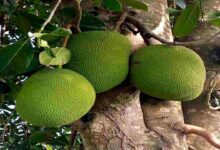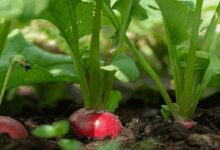Agriculture News: These healthy seeds will increase crop production and the crop will remain disease free
Agriculture News: Nurseries lay the groundwork for successful production of cereals, fruits and vegetables. In addition to ensuring healthy and quick seed germination in nurseries, it is also important to protect young plants from pests and diseases. Seed treatment techniques, which have advanced from traditional to integrated and contemporary processes, can help achieve this goal.

1. Chemical Seed Treatment: A Blend of Custom and Performance
Treatment with Fungicides
Fungicides such as tricyclazole, carbendazim and thiram are used regularly to protect nurseries from seed- and soil-borne diseases. Especially in rice nurseries, these fungicides can prevent problems such as blast, sheath blight and root rot.
Treatment with Pesticides
At the initial stage, seeds are treated with pesticides such as imidacloprid and fipronil to protect them from pests such as termites, planthoppers and leafhoppers. This first defense guarantees the stability and production of plants.
2. Organic seed treatment: Microorganisms, friends of nature
Both biopesticides and biofungicides
Pathogens found in seeds and soil are managed by microorganisms such as Trichoderma and Pseudomonas fluorescens. They stimulate seedling growth besides controlling disease.
Rhizobacteria that promote plant growth (PGPR)
By enhancing nutrient availability and biohormone production, PGPR bacteria such as Bacillus subtilis and Azospirillum accelerate seed germination.
3. Physical seed treatment: Chemical-free disease management
Physical techniques, such as heat and hot water treatment, can eliminate infections from seeds without leaving any chemical residues. This method is particularly effective for organic farming.
4. Priming Methods: Pre-Activating Seed Vitality
The process of hydropriming
Seeds germinate more uniformly and faster when soaked in regular water.
Osmopriming
Solutions such as PEG improve the water-absorbing capacity of plants and their ability to withstand stress.
Use of nutripriming
Soaking seeds in nutrient solutions containing zinc, boron, magnesium and other elements can preemptively meet the plant’s nutritional needs.
5. The idea of seed coating and pelleting in contemporary agriculture
Polymer covering facilitates regulated release of chemicals or nutrients and makes seeds easier to handle. Additionally, pelleting allows for uniform seed size and precise planting.
6. Nanotechnology based seed treatment: The next big thing
In very small quantities, nano pesticides and fertilizers are more effective. By activating the inherent power of seeds, nano-priming increases the rate of germination and early growth.
7. Biostimulant-based treatments: Harnessing the power of nature
Seaweed extracts, humic and fulvic acids and other biostimulants provide natural growth hormones and nutrients to seeds, helping plants thrive right from the start.
8. Ultrasonic and electromagnetic therapy: An innovative step
Applying electromagnetic and ultrasonic waves to plants can improve germination. These methods are non-chemical and safe for the environment.
9. Integrated seed treatment methods: The path to successful integration
Seeds can benefit from a variety of techniques by integrating chemical, biological, physical and technological approaches. For example, bio-priming, which involves initially applying a fungicide to seeds before covering them with nutrients, promotes normal growth and protection.
- Useful advice: Things to consider for effective seed treatment
- Seed quality: Choose seeds for treatment that are healthy, mature and disease-free.
- Avoid incompatibility between chemical and biological treatments.
- Economic impact: Choose environmentally friendly practices.
- Cost-benefit: Choose solutions that are economical, efficient and viable for farmers from a commercial point of view.
- Regulatory compliance: Follow the authorized list of treatment substances.

